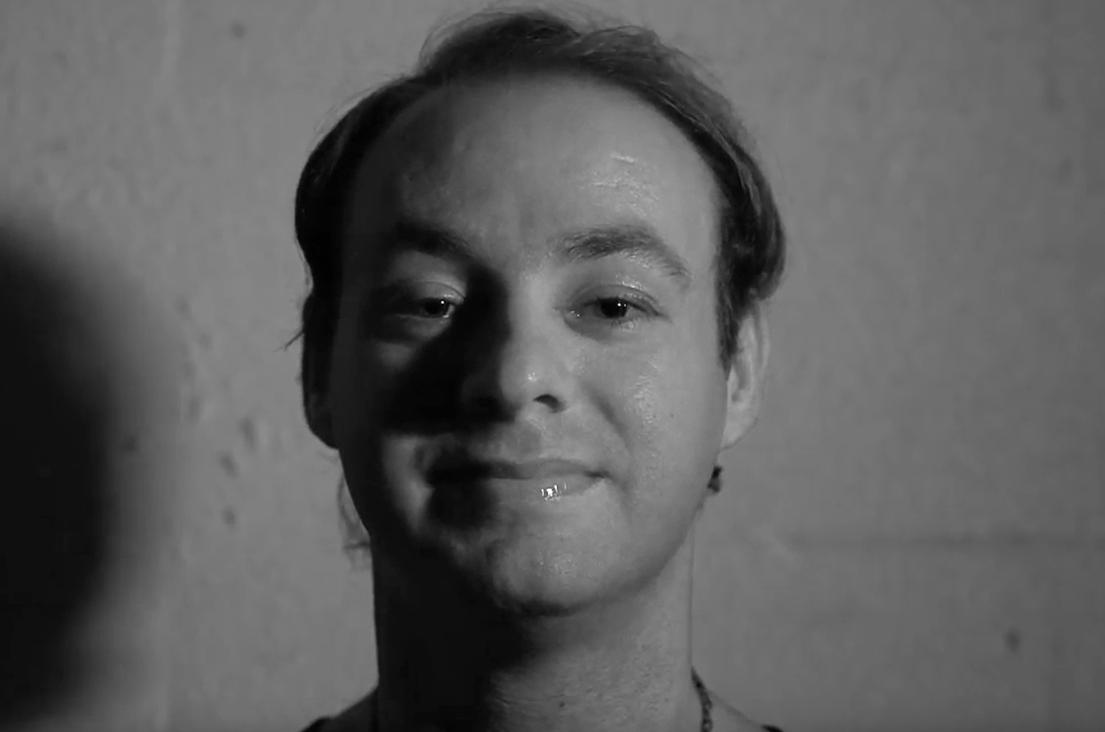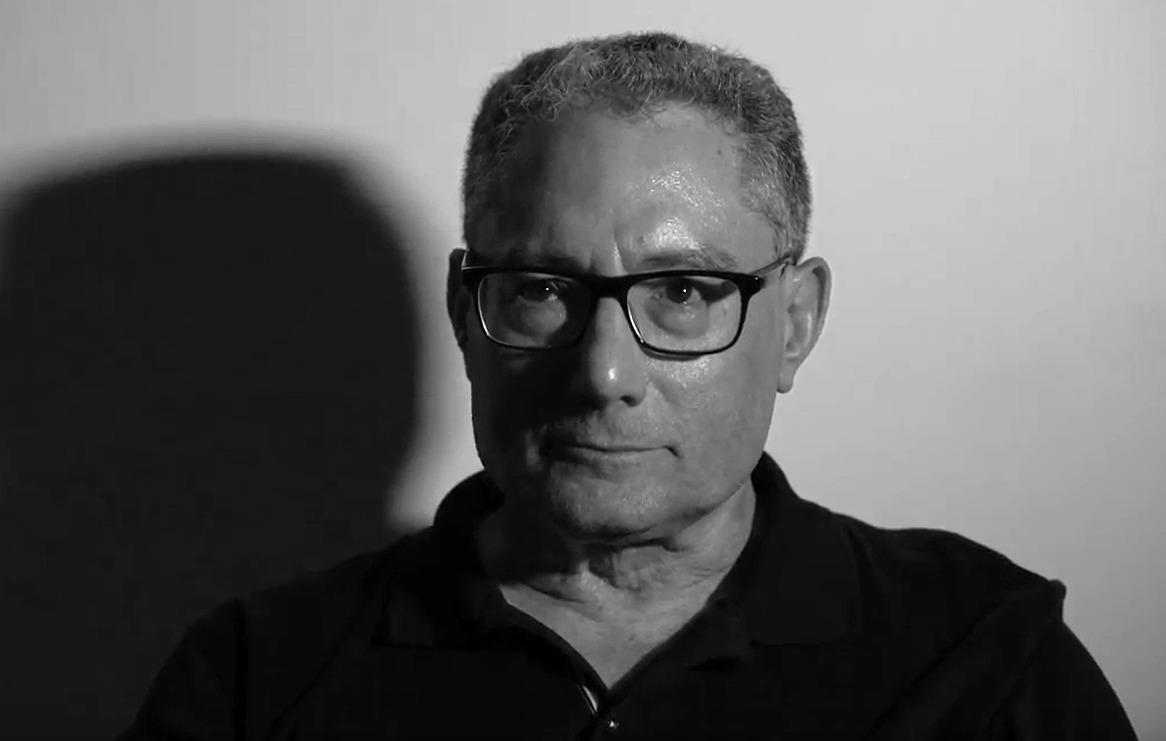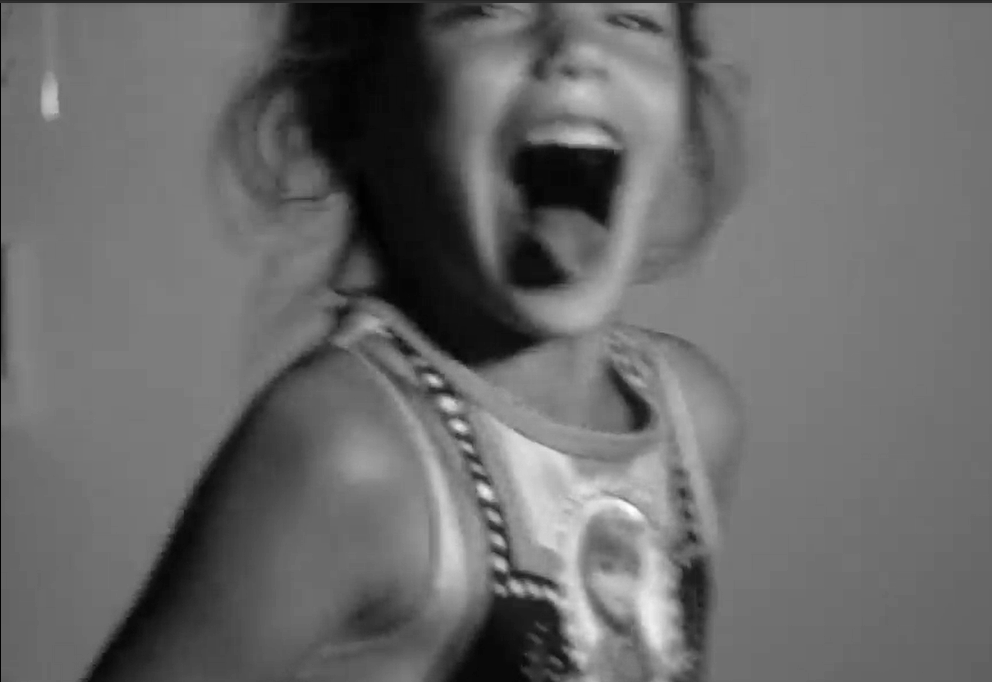By Don Gialanella
. . .
Florida Faces
A Video Portrait of the Community
. . .
I have long been intrigued with Andy Warhol’s film experiments and wanted to produce a film inspired by his unique style.
So, I applied for a St. Pete Art Alliance grant with the idea of creating a video that would document the people of St. Pete based on the series of short, silent, black-and-white film portraits by Andy Warhol called Screen Tests, made between 1964 and 1966.

In Warhol’s Screen Tests, his subjects sat in front of a plain background and were instructed to do nothing for three minutes while confronted by the cyclopean eye of the camera lens. These films represented a new kind of portraiture — a slowly moving, nearly still image of a person.
Subjects were crudely lit while Warhol filmed them with his tripod-mounted 16mm Bolex black-and-white camera. Each subject was filmed for three minutes.
The standard formula of subject and camera remaining almost motionless for the duration of the film resulted in what Andy called a “living portrait.” When Warhol showed the films, he slowed them down slightly, extending their run time to roughly four minutes each, imparting a dreamy, slow-motion effect to the faces.

. . .. . .“Warhol’s films drastically reduced the roles of director and viewer alike. The director’s function was limited to choosing the subject, setting up the shot, turning the camera on and off and deciding whether or not to exhibit the result. And the viewer, for the first time in the history of the commercial exploitation of persistence-of-vision, was relieved of the obligation — perhaps even a large part of the desire — to pay attention to the screen. The standard ‘film-as-wallpaper’ definition of the early Warhol films doesn’t stand up, since their entire meaning and effect spring from the fact of their projection on a screen in a darkened room.” – Tony Rayns, Andy Warhol: Film Factory, 1989
Although Warhol’s process was standardized, there are subtle lighting and focus variations in the Screen Tests. Some were in soft focus and bathed in light, creating an ethereal effect, while others used stark directional lighting for a darker mood. There are a number of Screen Tests that diverge from this format entirely, the sitter purposely moving, gesticulating, or using props.
My idea was to resurrect Andy’s Screen Test format to document the diversity of people living in the local Pinellas County community. By keeping the parameters of the filming situation the same – black and white, dramatic lighting, no sound – this stark presentation comments on our isolation during the last two years of living with Covid restrictions.

is one of the faces in “Diversity”
I was thrilled to be given the grant and immediately began the process of production. I first recruited an assistant, a young photographer named Ran Flugstad who is enthusiastic and talented. Together, Ran and I set out to film our subjects with a variety of strategies.
First, we filmed at an informal get-together in a friend’s backyard in St. Pete to get our feet wet. Next, we organized a larger gathering to shoot more faces in my studio, not altogether different in spirit to Andy’s filming sessions at “The Factory,” his notorious NYC studio.
Finally, we plan to do several “guerilla” shooting sessions at night on the street that will hopefully capture a very diverse and eccentric cross-section of our local community.

The post-production phase, editing what will be over five hours of video down to roughly 30 minutes, will be where the magic happens that brings it all together.
. . .
donsculpture.com
. . .
Diversity will premiere this fall as part of the Arts Annual Film Showing at the Creative Pinellas auditorium located at 12211 Walsingham Rd, Largo, FL 33778. Admission is free.
. . .



